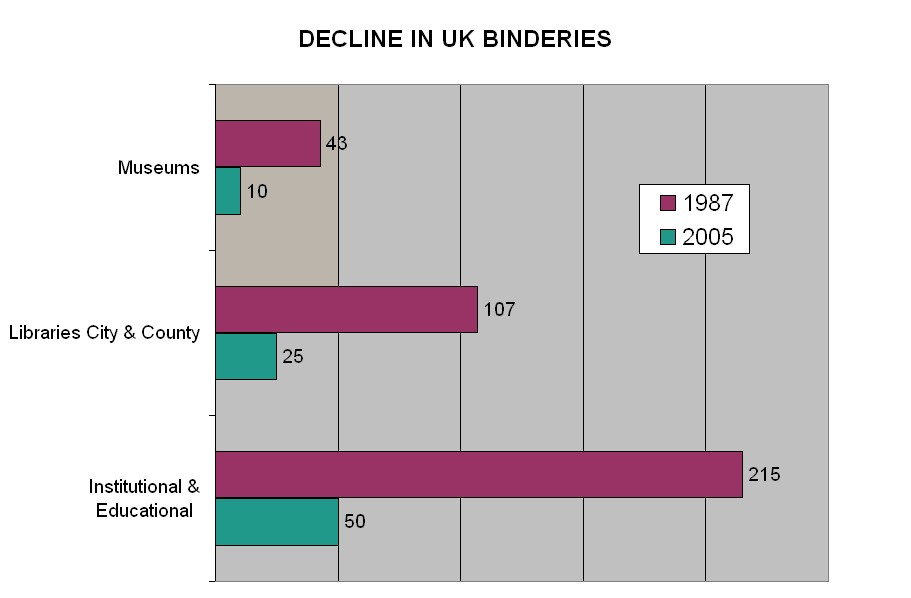
Volume 20 - Autumn 2005
The Decline and Fall, part 1 - The Institutional Bindery
by David Lanning
When I joined Hewits in 1987, a sizeable proportion of our UK customers were institutional or 'social' binderies. By these I mean university and county libraries, national and regional archives and museums. Having researched our records, I have ascertained that in the late 80's some 365 active binderies served our prosperous society, distributed as shown in the chart below.

In less than two decades of continuing prosperity, more than three-quarter have closed, leaving just 85 'social' binderies, and few observers feel the decline has stopped. Of course there are many reasons for the loss of particular binderies, laboratories and studios.
Three common causes are: governmental demands, budget cuts.Departmental closures have forced librarians and archivists to contract work out to trade binderies, much that was once done 'in-house'. This can be seen especially with new periodical and journal binding.
There has been a change in emphasis in the way that old books and documents are being treated. Now, many items are being stabilised and preserved in their current state in archival boxes and containers. Again, budgetary concerns are a factor, but current trends in book and document conservation lean towards preservation in a stable state as the preferred method of treatment, rather than the more traditional forms of conservation by restoration.
The third, and ultimately most devastating cause is the digital age. CD's, DVD's and of course the Internet with its limitless on-line storage capacity mean that ever more information is available from a computer screen or mobile phone at the user's convenience, and as a result the demand to see reference (or any) books in libraries continues to decline, inexorably.
And the Future...?
Whilst we continue to match our thirst for knowledge with a love of the printed word there will continue to be a demand for hand bookbinders, conservators and restorers, whose skills in future presumably will embrace coated polyester tape and polycarbonate discs. But with the overall decline in their numbers, it may be increasingly difficult for them to sustain the suppliers that they depend upon, witness the demise of many famous names in our time.
And of course while the customer and product variety and numbers shrink, so does the provision of craftsmen. Where on earth will they come from, and what skills will they possess?
